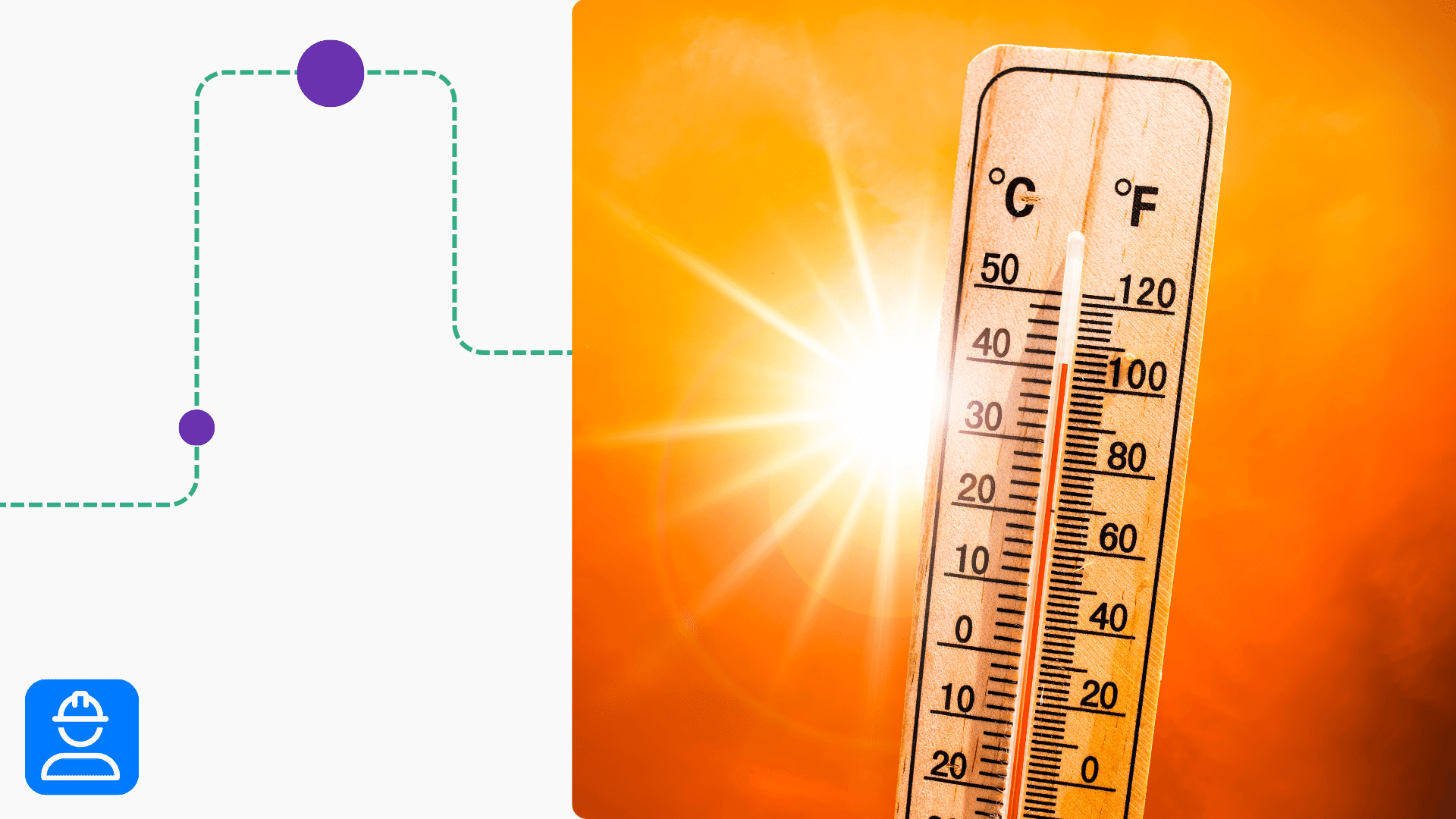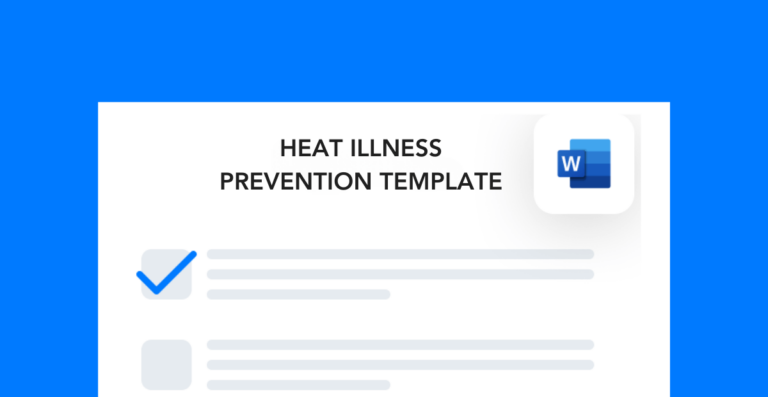The threat of heat-related illness is very real, even if you don’t spend the entire day outside. Understanding heat exhaustion symptoms is crucial for preventing serious health issues. Both employers and workers are responsible for taking safety precautions against these symptoms. Below are some safety tips for heat exhaustion in the workplace.
Free template!
Download this free heat illness prevention template to create a document that outlines your site’s strategy and procedures to address any heat exhaustion symptoms. This will ensure your team is informed.
What are heat exhaustion symptoms?
Heat illness is a sickness caused by the body’s inability to maintain homeostasis under excessive heat conditions. Symptoms of heat exhaustion include:
- Excessive sweating and/or thirst
- Headaches
- Decreased urination
- Dizziness and/or weakness
- Irritability
- Nausea
- Increased body temperature and sweat output
When it comes to preventing these issues, there are a lot of factors you need to consider. Here are some of the conditions that can cause heat exhaustion symptoms:
- Dehydration or inconsistent water intake
- Poor temperature acclimatization
- Physical overexertion
- Excessive weather conditions (high temperatures and humidity)
Aside from these external factors, you also have to take into account the health of your employees. In particular, older workers are more likely to develop heat illness. And some workers may have preexisting medical conditions, making them more susceptible to displaying heat exhaustion symptoms in hot work conditions.
Heat-related safety tips
Follow these safety tips if you want to avoid developing heat exhaustion symptoms in your workers:
- Stay well-hydrated throughout the duration of your shift by drinking lots of water and taking electrolyte supplements (if needed).
- Take regular breaks to steady your heartbeat and regulate your body temperature.
- Wear light-colored clothing that doesn’t absorb the heat of the sun and make sure your clothes are loose enough to promote sufficient air circulation.
- Avoid caffeinated and sugary drinks to prevent headaches and dehydration.
- Wear a hat, sunglasses, and sunscreen to protect yourself from sunburn and headaches.
- If you feel overheated, cool down by applying cool compresses to your neck and wrists or pouring water on your head and face.
- When possible, take your breaks during peak heat times so you can avoid the worst of the weather conditions.
- Factor your electrolyte balance into your meals, making sure to get enough salt to replenish what you’re losing through your sweat.
- Advocate for yourself by letting your manager and coworkers know when you’re feeling dizzy, lightheaded, nauseous, or any of the other symptoms of heat exhaustion.
Basically, the earlier you can identify signs of heat exhaustion symptoms, the more effectively you can manage them. Moreover, taking these preventive measures will help you better regulate your body temperature and avoid a serious medical emergency. Then, if you remain proactive, you should be able to work even during the hottest months of the year.




